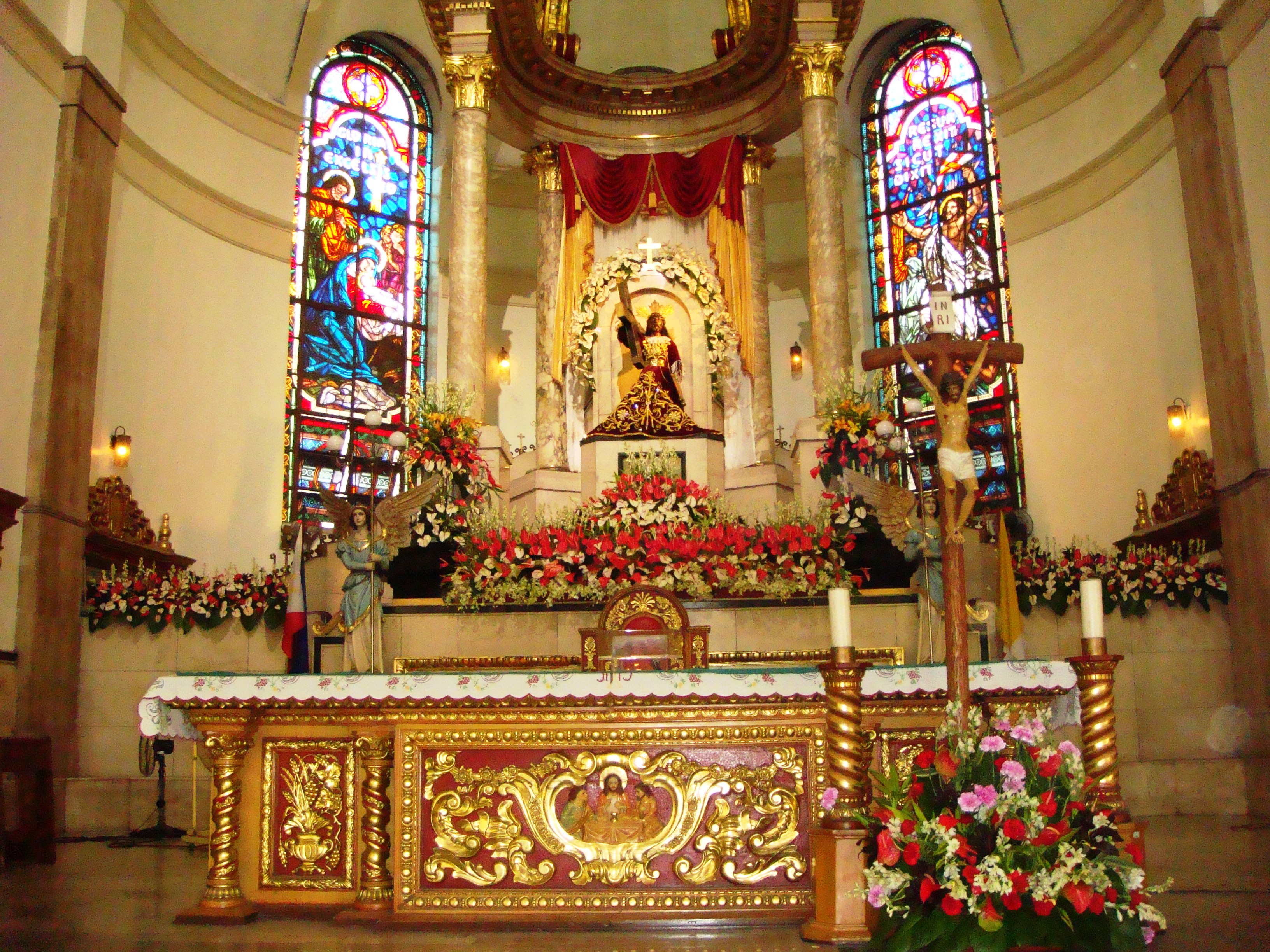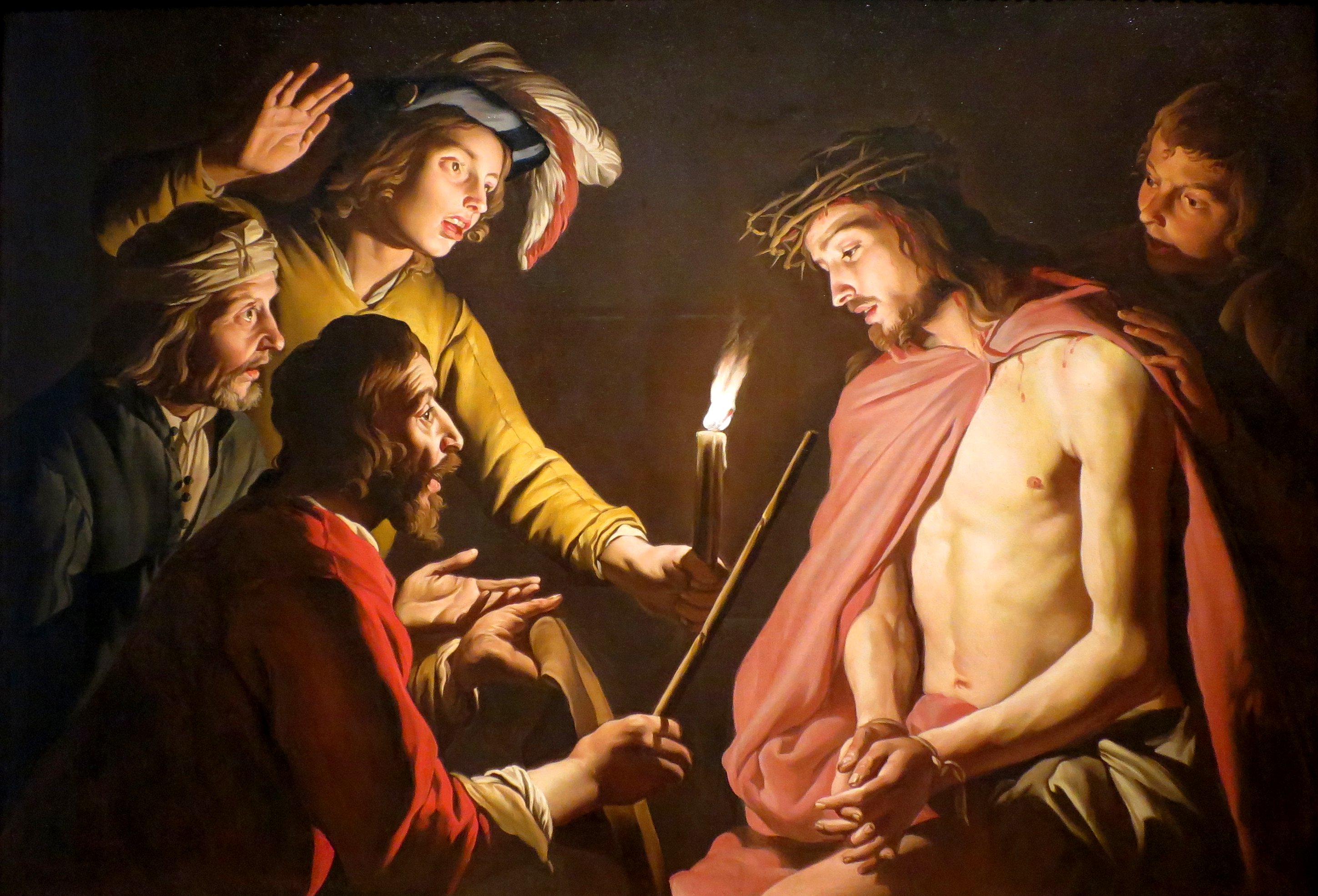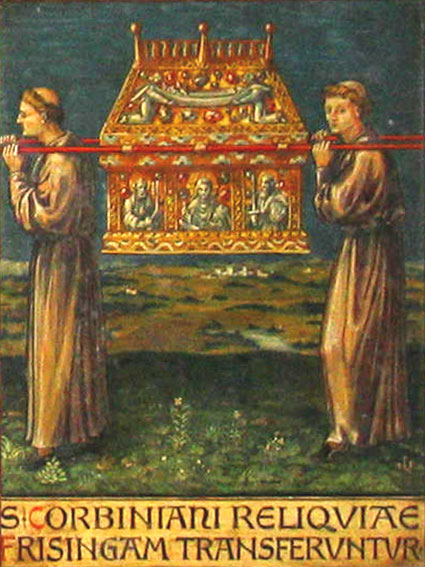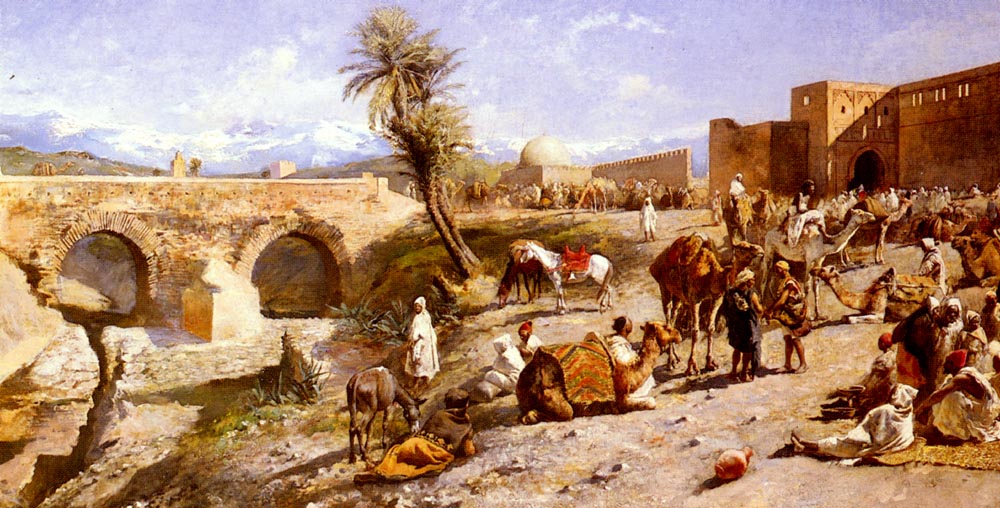|
Black Nazarene
The Black Nazarene ( es, El Nazareno Negro, Nuestro Padre Jesús Nazareno; fil, Poóng Itím na Nazareno, Hesus Nazareno) is a life-sized image of a dark-skinned, kneeling Jesus Christ carrying the Cross enshrined in the Minor Basilica of the Black Nazarene in the Quiapo district of the City of Manila, Philippines. The dark wooden image was carved by an anonymous Mexican artist in the 16th century and then brought to the Philippines in 1606. It depicts Jesus en route to his crucifixion. Pope Innocent X granted recognition to the lay Confraternity of Santo Cristo Jesús Nazareno in 1650 for the promotion of the devotion to Jesus through the icon. It was housed in various churches near Manila in the early decades, arriving in Quiapo Church in 1787 where it has been enshrined ever since. The icon is renowned in the Philippines and is considered by many Filipino Catholics to be miraculous; its mere touch is reputed to cure disease. It attracts homage from numerous devotees, ... [...More Info...] [...Related Items...] OR: [Wikipedia] [Google] [Baidu] |
Quiapo, Manila
Quiapo () is a district of the city of Manila, in the National Capital Region of the Philippines. Referred to as the "Old Downtown of Manila", Quiapo is home to the Quiapo Church, where the feast of the Black Nazarene is held with millions of people attending annually. Quiapo has also made a name for itself as a place for marketplace bargain hunting. Quiapo is geographically located at the very center of the city of Manila. It is bounded by the Pasig River and Estero de San Miguel to the south, San Miguel to the east, Recto Avenue to the north and Rizal Avenue to the west. Etymology Quiapo's name is derived from the abundance of water cabbage ('' Pistia stratiotes''), called ''kiyapo'' in Tagalog (spelled '' quiapo'' in Philippine Spanish) in the nearby Pasig River. The town of Cuyapo in Nueva Ecija is also named after the same plant. History Since the American insular government and commonwealth periods through to the late 1970s, Quiapo shared its status as the center ... [...More Info...] [...Related Items...] OR: [Wikipedia] [Google] [Baidu] |
Crucifixion Of Jesus
The crucifixion and death of Jesus occurred in 1st-century Judea, most likely in AD 30 or AD 33. It is described in the four canonical gospels, referred to in the New Testament epistles, attested to by other ancient sources, and considered an established historical event. There is no consensus among historians on the details.Christopher M. Tuckett in ''The Cambridge companion to Jesus'' edited by Markus N. A. Bockmuehl 2001 Cambridge Univ Press pp. 123–124 In the canonical gospels, Jesus is arrested and tried by the Sanhedrin, and then by Pontius Pilate, who sentences him to flagellation and finally crucifixion by the Roman Empire.''The Cradle, the Cross, and the Crown: An Introduction to the New Testament'' by Andreas J. Köstenberger, L. Scott Kellum 2009 pp. 104–108Evans, Craig A. (2001). ''Jesus and His Contemporaries: Comparative Studies'' p. 316 Jesus was stripped of his clothing and offered vinegar mixed with myrrh or gall (likely posca), t ... [...More Info...] [...Related Items...] OR: [Wikipedia] [Google] [Baidu] |
Cristo Negro (Portobelo)
''Cristo Negro'' (Black Christ; also known as "Nazareno"; nicknames, "Naza", "el Negro", "el Negrito", "el Cristo", and "el Santo") is a wooden statue of Jesus Christ in Iglesia de San Felipe, a Roman Catholic parish church located in Portobelo, Panama. The statue was found on the shores of the town's harbour. Life size, it is adorned with a robe that is changed twice a year, once during the Festival of the Black Christ and during Holy Week. Black Christ is venerated throughout the year, most particularly on October 21, during the Festival of the Black Christ. A similar image called '' The Black Nazarene'' is venerated in Quiapo, Manila, Philippines. Statue The origins of the statue are unclear. The wooden image of Christ washed ashore at Portobelo, picked up by fishermen. It was initially housed in a small church and venerated. After Iglesia de San Felipe was built, the statue was installed there. One legend says that the statue was said to be sent to Spain. Some time during t ... [...More Info...] [...Related Items...] OR: [Wikipedia] [Google] [Baidu] |
Santo Niño De Cebú
The Santo Niño de Cebú is a Roman Catholic title of the Child Jesus associated with a religious image of the Christ Child widely venerated as miraculous by Filipino Catholics. It is the oldest Christian artifact in the Philippines, originally a gift from the Spaniard Conquistador Ferdinand Magellan to Rajah Humabon (baptized as Carlos) and his wife and chief consort, Reyna Humamay (baptized as Juana) on account of their Christian baptism in 1521. The dark wood statue measures approximately twelve inches tall, and carved in the Flemish style. It depicts the Child Jesus, with a serene countenance, in the attitude and dress of a Spanish monarch. The statue bears imperial regalia, including a golden crown, globus cruciger, and various sceptres, wears fine vestments, and possesses jewelry mostly offered by devotees over several centuries. Pope Paul VI granted a decree of Canonical Coronation titled ''Cunabula Religionis'' on 27 February 1964 which the coronation was executed on ... [...More Info...] [...Related Items...] OR: [Wikipedia] [Google] [Baidu] |
Intramuros
Intramuros (Latin for "inside the walls") is the historic walled area within the city of Manila, the capital of the Philippines. It is administered by the Intramuros Administration with the help of the city government of Manila. Present-day Intramuros comprises a centuries-old historic district, entirely surrounded by fortifications, that was considered at the time of the Spanish Empire to be the entire City of Manila. Other towns and ''arrabales'' (suburbs) located beyond the walls that are now districts of Manila were referred to as ''extramuros'', Latin for "outside the walls", and were independent towns that were only incorporated into the city of Manila during the early 20th century. Intramuros served as the seat of government of the Captaincy General of the Philippines, a component realm of the Spanish Empire, housing the colony's governor-general from its founding in 1571 until 1865, and the Real Audiencia of Manila until the end of Spanish rule during the Philippine Re ... [...More Info...] [...Related Items...] OR: [Wikipedia] [Google] [Baidu] |
Novena
A novena (from Latin: ''novem'', "nine") is an ancient tradition of devotional praying in Christianity, consisting of private or public prayers repeated for nine successive days or weeks. The nine days between the Feast of the Ascension and Pentecost, when the disciples gathered in the upper room and devoted themselves to prayer, is often considered to be the first novena. In some Christian communities, such as in Africa, Latin America and the Philippines, novena traditions are popular and include devotional rituals such as congregational prayers, the decoration of statues, hymn singing with music, as well as community fiesta events over beverages, refreshments or processions. Novenas are most often prayed by members of the Roman Catholic Church, but also by Lutherans, Anglicans, and Eastern Orthodox Christians; they have been used in ecumenical Christian settings as well. The prayers are often derived from devotional prayer books, or consist of the recitation of the rosary (a ... [...More Info...] [...Related Items...] OR: [Wikipedia] [Google] [Baidu] |
New Year's Eve
In the Gregorian calendar, New Year's Eve, also known as Old Year's Day or Saint Sylvester's Day in many countries, is the evening or the entire day of the December 31, last day of the year, on 31 December. The last day of the year is commonly referred to as “New Year’s Eve”. In many countries, New Year's Eve is celebrated with dancing, eating, drinking, and watching or lighting fireworks. Some Christians attend a watchnight service. The celebrations generally go on past midnight into New Year's Day, January 1, 1 January. The Line Islands (part of Kiribati) and Tonga, in the Pacific Ocean, are the first places to welcome the New Year, while American Samoa, Baker Island and Howland Island (part of the United States Minor Outlying Islands) are among the last. By region Africa Algeria In Algeria, New Year's Eve (french: Réveillon; '' ar, Ra’s al-‘Ām'') is usually celebrated with family and friends. In the largest cities, such as Algiers, Constantine, Algeria, Constant ... [...More Info...] [...Related Items...] OR: [Wikipedia] [Google] [Baidu] |
Passion Of Jesus
In Christianity, the Passion (from the Latin verb ''patior, passus sum''; "to suffer, bear, endure", from which also "patience, patient", etc.) is the short final period in the life of Jesus Christ. Depending on one's views, the "Passion" may include, among other events, Jesus' triumphal entry into Jerusalem, his cleansing of the Temple, his anointing, the Last Supper, Jesus' agony in the Garden, his arrest, his Sanhedrin trial, his trial before Pontius Pilate, his crucifixion and his death on Good Friday, his burial, and the resurrection of Jesus. Those parts of the four canonical Gospels that describe these events are known as the "Passion narratives". In some Christian communities, commemoration of the Passion also includes remembrance of the sorrow of Mary, the mother of Jesus, on the Friday of Sorrows. The word ''passion'' has taken on a more general application and now may also apply to accounts of the suffering and death of Christian martyrs, sometimes using the L ... [...More Info...] [...Related Items...] OR: [Wikipedia] [Google] [Baidu] |
Good Friday
Good Friday is a Christian holiday commemorating the crucifixion of Jesus and his death at Calvary. It is observed during Holy Week as part of the Paschal Triduum. It is also known as Holy Friday, Great Friday, Great and Holy Friday (also Holy and Great Friday), and Black Friday. Members of many Christian denominations, including the Catholic, Eastern Orthodox, Lutheran, Anglican, Methodist, Oriental Orthodox, United Protestant and some Reformed traditions (including certain Continental Reformed, Presbyterian and Congregationalist churches), observe Good Friday with fasting and church services. In many Catholic, Lutheran, Anglican and Methodist churches, the Service of the Great Three Hours' Agony is held from noon until 3 pm, the time duration that the Bible records as darkness covering the land to Jesus' sacrificial death on the cross. Communicants of the Moravian Church have a Good Friday tradition of cleaning gravestones in Moravian cemeteries. The date o ... [...More Info...] [...Related Items...] OR: [Wikipedia] [Google] [Baidu] |
Translation (relics)
In Christianity, the translation of relics is the removal of holy objects from one locality to another (usually a higher-status location); usually only the movement of the remains of the saint's body would be treated so formally, with secondary relics such as items of clothing treated with less ceremony. Translations could be accompanied by many acts, including all-night vigils and processions, often involving entire communities. The solemn translation (in Latin, ''translatio'') of relics is not treated as the outward recognition of sanctity. Rather, miracles confirmed a saint's sanctity, as evinced by the fact that when, in the twelfth century, the Papacy attempted to make sanctification an official process; many collections of miracles were written in the hope of providing proof of the saint-in-question's status. In the early Middle Ages, however, solemn translation marked the moment at which, the saint's miracles having been recognized, the relic was moved by a bishop or abbot ... [...More Info...] [...Related Items...] OR: [Wikipedia] [Google] [Baidu] |
Feast Of The Black Nazarene
The Feast of the Black Nazarene (Filipino: ''Pista ng Itím na Nazareno''), also known as the ''Traslación'' after the mass procession associated with the feast, is a religious festival held in Manila, Philippines that is centered around the Black Nazarene, an image of Jesus Christ. It is celebrated annually on January 9. Background History The Feast of the Black Nazarene commemorates the anniversary of the translation or the transfer of the image from its original location at a church in modern-day Luneta Park to Quiapo. The image was brought to the Church of San Juan Bautista in Bagumbayan (now Luneta) until May 31, 1606 by Augustinian Recollect priests. In 1608, the icon was enshrined at the Recollect church of San Nicolás de Tolentino in Intramuros. It was moved to the Saint John the Baptist Church, which is now commonly referred to as the Quiapo Church, on January 9, 1787. The "solemn transfer" eventually became the date of the Feast of the Black Nazarene. Image Names ... [...More Info...] [...Related Items...] OR: [Wikipedia] [Google] [Baidu] |
Procession
A procession is an organized body of people walking in a formal or ceremonial manner. History Processions have in all peoples and at all times been a natural form of public celebration, as forming an orderly and impressive ceremony. Religious and triumphal processions are abundantly illustrated by ancient monuments, e.g. the religious processions of Egypt, those illustrated by the rock-carvings of Boghaz-Keui, the many representations of processions in Greek art, culminating in the great Panathenaic procession of the Parthenon Frieze, and Roman triumphal reliefs, such as those of the arch of Titus. Greco-Roman practice Processions played a prominent part in the great festivals of Greece, where they were always religious in character. The games were either opened or accompanied by more or less elaborate processions and sacrifices, while processions from the earliest times formed part of the worship of the old nature gods, as those connected with the cult of Dionysus and the ... [...More Info...] [...Related Items...] OR: [Wikipedia] [Google] [Baidu] |


_-_Iglesia_de_San_Felipe_(01).jpg)

_by_Brambila.jpg)





